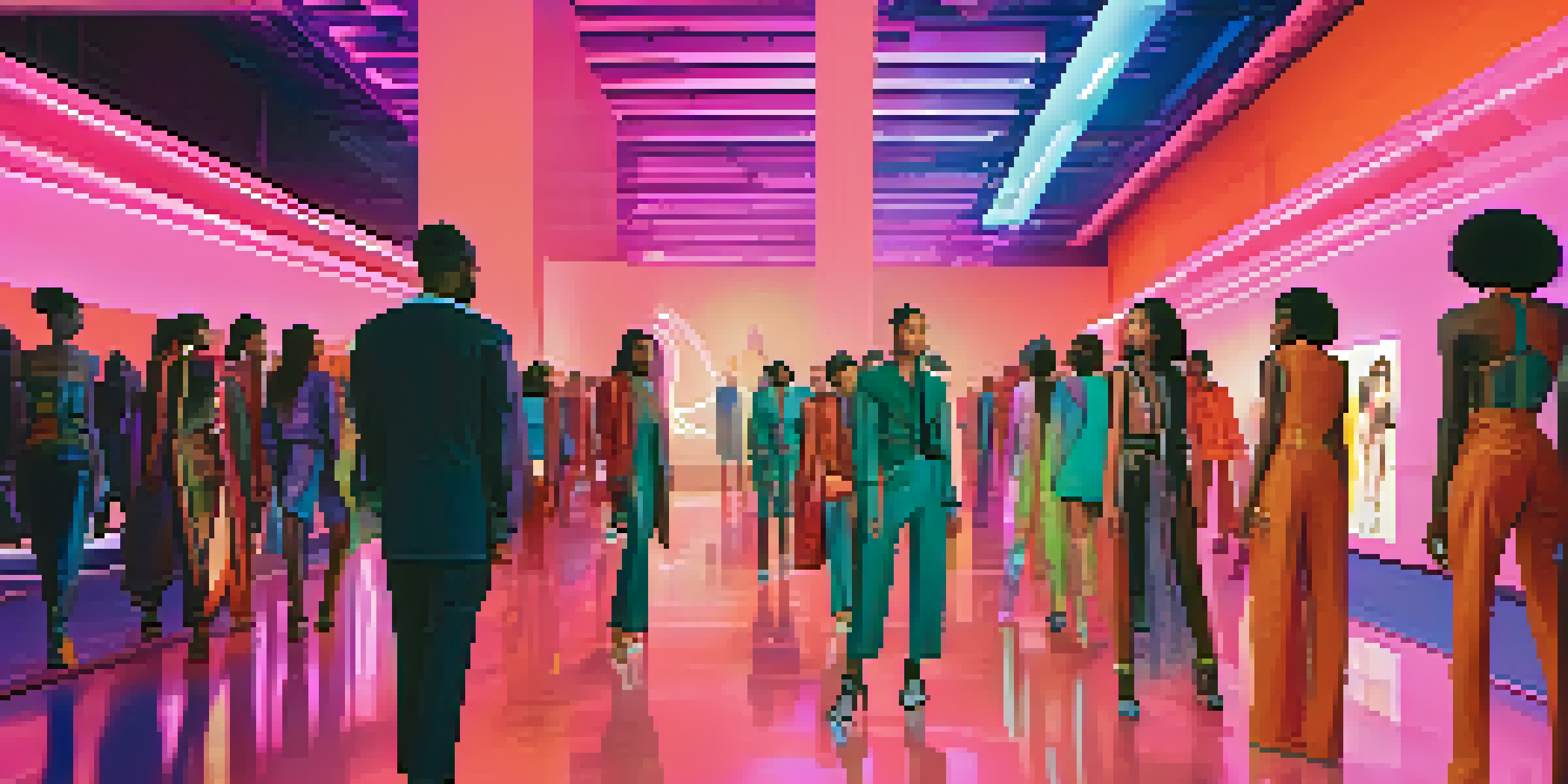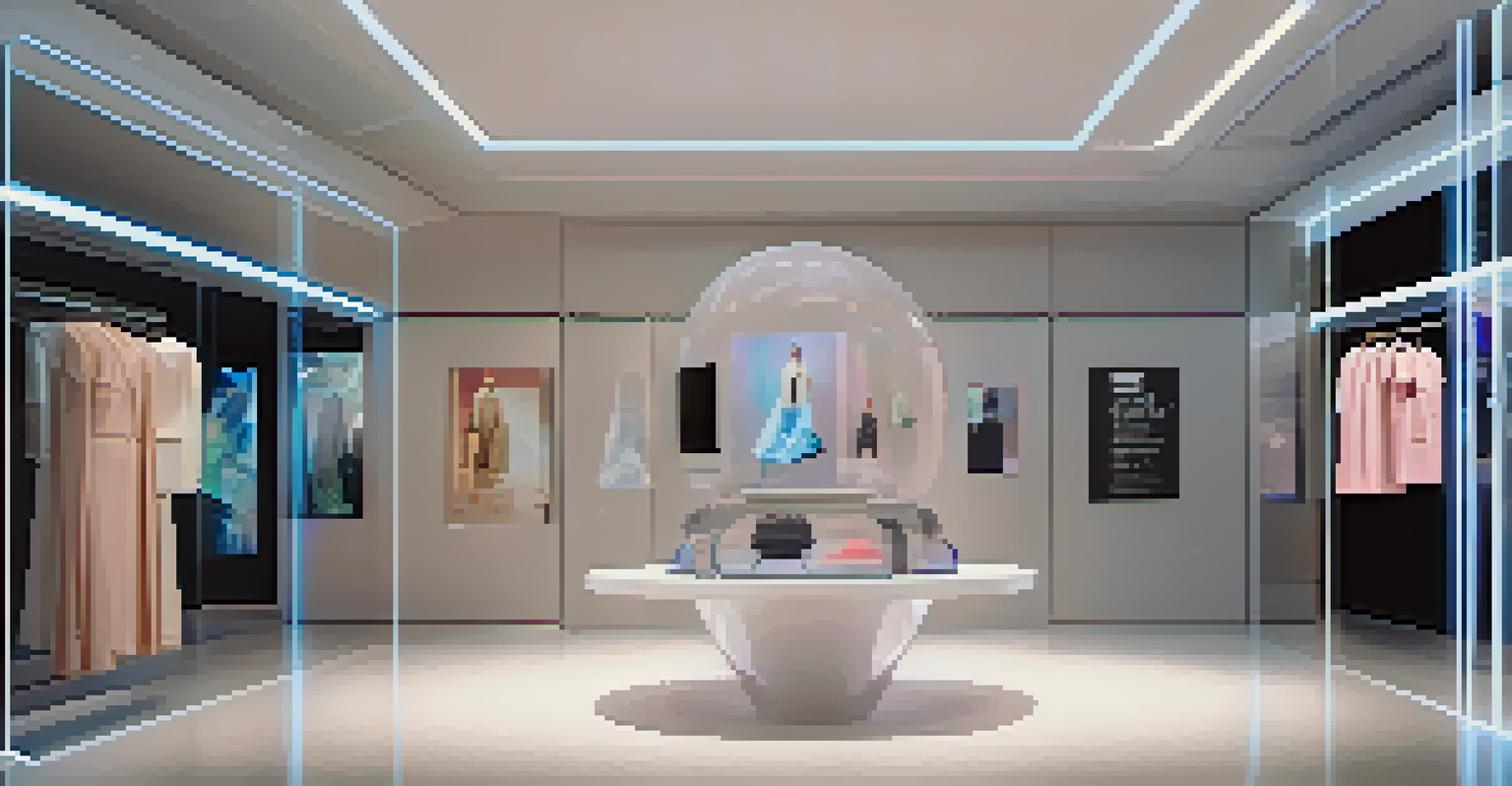The Rise of Digital Fashion Weeks: A New Era of Fashion

What Are Digital Fashion Weeks and Why They Matter
Digital fashion weeks are virtual events where designers showcase their latest collections online instead of traditional runway shows. This shift makes fashion more accessible to a global audience, breaking geographical barriers that typically limit participation. With the rise of technology, these events allow for creative presentations that might not be possible in physical settings.
Fashion is about dreaming and making other people dream. But it’s also about being practical and connecting with your audience in a real way.
Imagine attending a fashion show from the comfort of your home, where you can see every detail of the garments up close, thanks to 360-degree videos. This immersive experience not only caters to fashion enthusiasts but also opens up opportunities for brands to reach new demographics. As more consumers embrace online shopping, these digital showcases are becoming a vital part of the fashion calendar.
Moreover, digital fashion weeks can significantly reduce the environmental impact associated with traditional shows, such as travel and resource-intensive staging. As sustainability becomes a crucial concern for consumers and brands alike, this shift to virtual platforms aligns with efforts to create a greener industry.
The Impact of COVID-19 on Fashion Events
The COVID-19 pandemic acted as a catalyst for the rise of digital fashion weeks. With physical gatherings restricted, many brands were forced to pivot to online formats, showcasing their collections through live streams and pre-recorded videos. This situation accelerated a trend that was already gaining traction, allowing for more innovative approaches to fashion presentations.

In 2020, major fashion capitals like New York and Paris quickly adapted to the new normal, embracing technology to keep the industry moving. The necessity of these changes highlighted the potential benefits of digital formats, such as lower costs and greater reach. Designers who once relied heavily on traditional runway shows began experimenting with virtual reality and augmented reality experiences.
Digital Fashion Weeks Enhance Access
These virtual events allow designers to showcase their collections globally, breaking down geographical barriers and making fashion more accessible.
As a result, the pandemic not only challenged the fashion industry but also prompted a reevaluation of how collections are presented. The success of these digital formats has led many brands to consider a hybrid approach, combining both physical and virtual elements in future events to cater to diverse audiences.
Innovative Technologies Transforming Fashion Shows
Technological advancements are playing a significant role in the evolution of digital fashion weeks. Tools like live streaming, 3D modeling, and virtual reality are enhancing the way designers present their collections. These technologies allow for more engaging and dynamic showcases, creating a richer experience for viewers.
The future of fashion is in the hands of those who are not afraid to innovate and embrace new technologies.
For example, some brands have started incorporating interactive elements into their presentations, allowing viewers to click on garments to learn more about them or even purchase items directly. This level of engagement transforms a passive viewing experience into an active shopping opportunity, appealing to today’s digital-savvy consumers. Imagine being able to explore a designer's collection while simultaneously adding pieces to your cart!
Additionally, augmented reality has emerged as a game-changer, allowing consumers to visualize how clothing would look on them without ever visiting a store. This capability not only enhances the shopping experience but also fosters a deeper connection between consumers and brands, driving loyalty and sales.
Changing Consumer Behavior in the Digital Age
The shift to digital fashion weeks reflects broader changes in consumer behavior, particularly among younger generations. Millennials and Gen Z are accustomed to engaging with brands online, often seeking authenticity and transparency. This demographic values experiences over mere products, making digital fashion weeks a perfect match for their preferences.
As consumers increasingly turn to social media for fashion inspiration, digital fashion weeks provide a platform for brands to connect with their audience in real-time. Live chats, Q&A sessions, and behind-the-scenes content foster a sense of community, allowing consumers to feel involved in the fashion narrative. This engagement is crucial in building brand loyalty and recognition.
Tech Innovations Reshape Fashion Shows
Advancements like live streaming and augmented reality create engaging presentations, transforming passive viewing into interactive shopping experiences.
Furthermore, the convenience of online access means that consumers can view collections from anywhere in the world, at any time. This accessibility not only broadens the audience base for designers but also encourages a more diversified representation in the fashion industry, as emerging designers can showcase their work on the same platform as established brands.
The Role of Social Media in Digital Fashion Weeks
Social media serves as a powerful tool in promoting digital fashion weeks, amplifying the reach of these events. Platforms like Instagram, TikTok, and Twitter enable designers to share their collections instantly, generating buzz and excitement. This immediate feedback loop creates a dynamic interaction between brands and their audience, shaping the narrative around their collections.
For instance, influencers and fashion bloggers often play a pivotal role in these events, providing commentary and coverage that can drive engagement. Their ability to reach large audiences makes them valuable partners for brands looking to maximize visibility. Imagine a well-known influencer sharing their favorite looks from a digital fashion week—this can significantly influence consumer perceptions and purchasing decisions.
Moreover, the integration of shoppable content on social media platforms allows viewers to transition seamlessly from inspiration to purchase. By clicking on links shared during digital fashion weeks, consumers can explore collections and buy pieces directly, blurring the lines between showcasing and selling. This strategy not only boosts sales but also enhances the overall shopping experience.
Challenges Faced by Digital Fashion Weeks
Despite their benefits, digital fashion weeks come with their own set of challenges. One significant hurdle is the potential loss of the experiential aspect that physical shows provide. The ambiance, the energy of the crowd, and the artistry of live performances contribute to the allure of traditional fashion events, which can be hard to replicate online.
Additionally, not all brands have the same level of resources or technological expertise to create engaging digital presentations. Smaller designers may struggle to compete with larger brands that can invest heavily in high-quality production and innovative technology. This disparity can lead to uneven representation during digital events, as some talents may be overshadowed.
Consumer Engagement Drives Success
Digital fashion weeks cater to younger generations by fostering real-time connections through social media, enhancing brand loyalty and recognition.
Furthermore, as virtual events become more common, there's a risk of oversaturation. Consumers may become fatigued by the sheer volume of content available online, making it essential for brands to find unique ways to stand out. Striking a balance between accessibility and exclusivity will be crucial in maintaining interest in digital fashion weeks.
The Future of Digital Fashion Weeks
Looking ahead, digital fashion weeks are likely to continue evolving alongside technological advancements and changing consumer behaviors. The potential for hybrid events—combining in-person elements with digital experiences—offers an exciting path forward. This approach could cater to both traditional audiences and the growing online community, creating a more inclusive fashion landscape.
As brands experiment with new formats and technologies, we can expect to see even more innovative presentations that push creative boundaries. For instance, incorporating gamification elements could transform fashion shows into interactive experiences, engaging consumers in new and exciting ways. The future of fashion is not just about showcasing clothes; it's about creating memorable experiences.

Ultimately, the rise of digital fashion weeks signifies a fundamental shift in how the fashion industry operates. By embracing technology and prioritizing accessibility, brands can foster a more diverse and sustainable future. As we move forward, the blend of tradition and innovation will shape the fashion landscape for years to come.